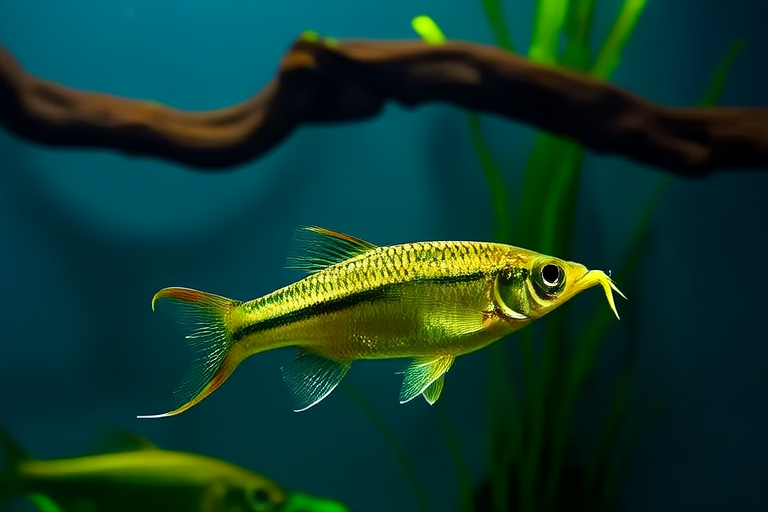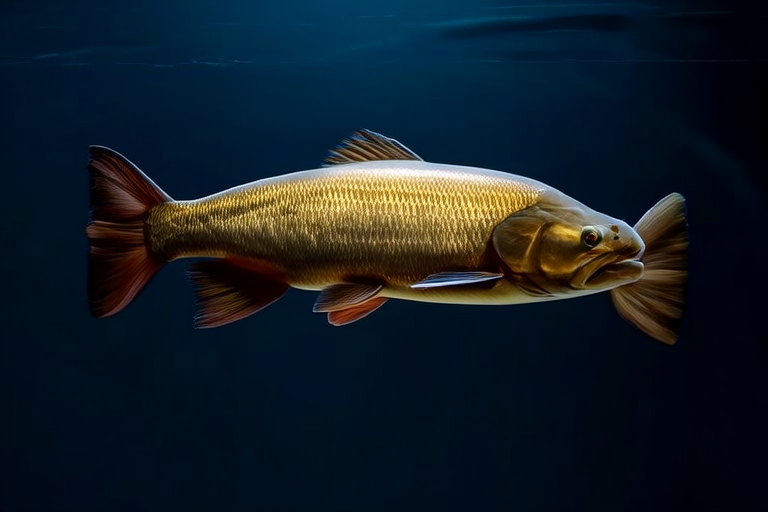
Aquarium Royalty: Unveiling the Secrets Behind Arowana Care
The arowana, often referred to as the “aquarium royalty,” is a majestic and highly sought-after fish species known for its striking appearance and unique behaviors. Native to the rivers and swamps of Southeast Asia, South America, and Africa, these fish are distinguished by their long, slender bodies and large, scaly fins. Their ability to leap out of the water to catch prey adds to their allure, making them a favorite among aquarium enthusiasts. However, caring for these regal creatures requires a deep understanding of their specific needs and habits.
Native Habitats and Ideal Tank Conditions
Arowanas thrive in environments that mimic their natural habitats. These include slow-moving rivers, flooded forests, and densely vegetated areas. In captivity, it’s essential to recreate these conditions as closely as possible. The ideal tank for arowanas should be spacious, with a minimum size of 75 gallons for a single adult. Larger tanks are recommended for multiple arowanas or if you plan to introduce other species.
Water parameters play a crucial role in ensuring the health of arowanas. The pH level should range between 6.8 and 7.4, and the hardness should be moderate, around 5-12 dGH. Temperature is equally important, ideally maintaining a range of 78°F to 82°F (25°C to 28°C). Regular monitoring and adjustment of these parameters are necessary to prevent stress and disease.
Filtration systems are vital for maintaining water quality. High-quality external canister filters or sump systems are preferred due to their efficiency in removing waste and maintaining oxygen levels. Additionally, ensure there is adequate surface agitation to promote gas exchange. This can be achieved through the use of air stones or powerheads.
Dietary Needs
Arowanas are carnivorous, feeding primarily on insects, crustaceans, and smaller fish in their natural habitat. In captivity, they require a varied diet to maintain their health and vibrant coloration. Commercial foods, such as specialized pellets or sticks designed for arowanas, provide a good base. However, supplementing with live or frozen foods like earthworms, bloodworms, and krill can enhance their diet and stimulate natural hunting behaviors.
Feeding frequency should be limited to two to three times a week, with small portions to prevent overfeeding and ensure all food is consumed within a few minutes. Overfeeding can lead to poor water quality and obesity, which can negatively impact the fish’s lifespan and well-being. It’s also advisable to avoid feeding fish that are too small, as this can cause digestive issues.
Common Health Issues and Preventive Measures
Like any aquatic creature, arowanas are susceptible to various health issues. Common ailments include fin rot, ich, and bacterial infections. Early detection and treatment are key to preventing more severe complications. Signs of illness may include lethargy, loss of appetite, abnormal swimming behavior, or visible lesions.
To prevent these issues, regular maintenance routines are essential. This includes weekly water changes of about 20% to remove toxins and replenish beneficial minerals. Cleaning the filter regularly and checking for clogs or wear can also help maintain water quality. Additionally, keeping the tank clean and free from debris can minimize the risk of infection.
Quarantine new additions to the tank for at least four weeks before introducing them to the main aquarium. This precaution helps identify any potential health issues early and prevents the spread of diseases to existing inhabitants.
Maintaining a Harmonious Environment
Creating a harmonious environment for arowanas involves careful consideration of tank mates, decorations, and behavioral insights. Arowanas are territorial and can become aggressive towards other fish, especially those of similar size or shape. Therefore, it’s best to house them alone or with compatible species that are larger and less likely to be seen as prey.
Decorations should be chosen with care to avoid sharp edges or small crevices where arowanas might get stuck. Floating plants and driftwood can be added to simulate their natural environment and provide hiding spots. However, ensure there is ample open space for swimming and leaping. Lighting should be moderate, mimicking natural daylight cycles.
Understanding arowana behavior is crucial for their well-being. They are intelligent and social creatures, often displaying curious and interactive behaviors. Providing mental stimulation through enrichment activities, such as offering live food or rearranging tank decor periodically, can help keep them engaged and reduce stress.






